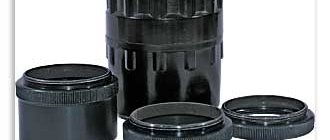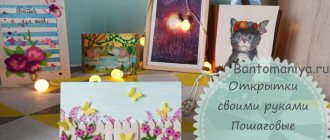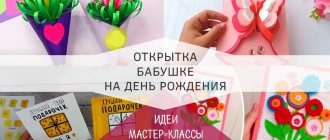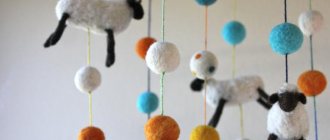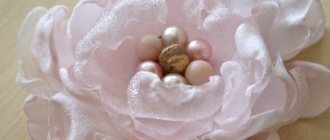Kaleidoscope - you probably had this magic tube in your childhood. Remember that feeling of miracle: an indescribable mixture of delight, surprise and happiness?
A wondrous pattern gives way to another, and they are not repeated - a new pattern arises every time! The world of mirror reflections delights and takes you on a fantastic journey. And the best part is that you can make a kaleidoscope with your own hands for the delight of children.
Optical secret
The main part of the kaleidoscope is three rectangles with a mirror surface . Multiple reflections from their planes create the effect of a fantastic ornament, repeated in different directions. And the slightest rotation of the body gives rise to more and more new patterns.
It is for this ability that the optical device (initially it was not intended for children at all) received its name from the combination of three Greek words kalos + eidos + skopeo, which can be translated as “I look at beautiful views.”
Another version of a do-it-yourself kaleidoscope - master class
We will need: a cardboard tube 12 cm long, computer disks, tracing paper and thick transparent film, some colored paper for design, colored transparent pebbles, glue, double-sided and regular tape.
Operating procedure:
- We cut out three rectangles 5 cm long from computer disks. Make their width in accordance with the diameter of the tube. We make a prism from rectangles with the mirror side inward. We insert it into the pipe to a depth of 5 cm on one side and 1.5 cm on the other.
- We cut out two circles from thick transparent film, with a diameter slightly smaller than the pipe. We place one circle on the ends of the prism on the side where it is located at a depth of 1.5 cm. We cut out a thin strip of cardboard and glue it inside to fix this circle. We pour colored pebbles onto the improvised glass and glue a circle of tracing paper on top.
- Cut out two circles with holes from blue paper, as shown in the diagram. We glue one of them onto a circle of tracing paper to hide all the irregularities. We glue another “donut” onto the second transparent circle, which we attach to the inspection hole on the other side of the pipe. We cover the kaleidoscope with beautiful paper, point it at the light and enjoy the magnificent color patterns.
Not just a toy
The invention of the English physicist Brewster was called differently: kaleidoscope, chromatoscope, shift, patternmaker, motley. It began its triumphal march back in 1817, and has been attracting the attention of people of all ages for more than a century.
And today, many adults can use the services of this extraordinary psychotherapist: by looking at the scattering of alternating ornaments, at any age they will be able to not only remember childhood emotions, but also relieve stress and calm frayed nerves. A pattern maker can also suggest a variety of creative ideas.
Do you know that...
- The word “kaleidoscope” comes from the Greek words: “beautiful”, “view”, “look”.
- Its history goes back almost a hundred years. In 1816 it was invented by D. Brewster as a scientific instrument. At first, only adults were entertained by beautiful patterns made of colored glass, then, gradually, analogues for children appeared, and the device was patented as a children's toy.
- But V.I. Dahl called the kaleidoscope a “pattern”.
- There are different types of such devices: chamber, in which patterns are created from pieces of glass and beads; gel or oil, in which patterns are formed from a liquid substance; wheeled - wheels are attached to the end of the tube, which create patterns.
- Watching changing color pictures is very useful for people who are depressed or in creative crisis. The fact is that the variety of constantly changing pictures stimulates the brain very well and activates our creative potential. Well, it gives a strong charge of positive emotions, of course!
- Doctors note the powerful psychotherapeutic effect of the kaleidoscope. It helps a person enter a state of deep relaxation, activates areas in the brain responsible for attention, memory, decision-making, and stimulates the imagination. It can even be used in developing the intelligence of children and in the treatment of psychological disorders in adults.
- This seemingly simple toy is also used for professional purposes - by designers, weavers, artists, and jewelers who create designs for wallpaper, carpets, fabrics, and stained glass.
- Such toys are often collected and bought as gifts.
If your child has technical inclinations, you can easily make such a toy with him and interest him. But if the baby is creative, then you don’t have to destroy the magical atmosphere, let the appearance of various patterns in a simple tube remain magic for him
